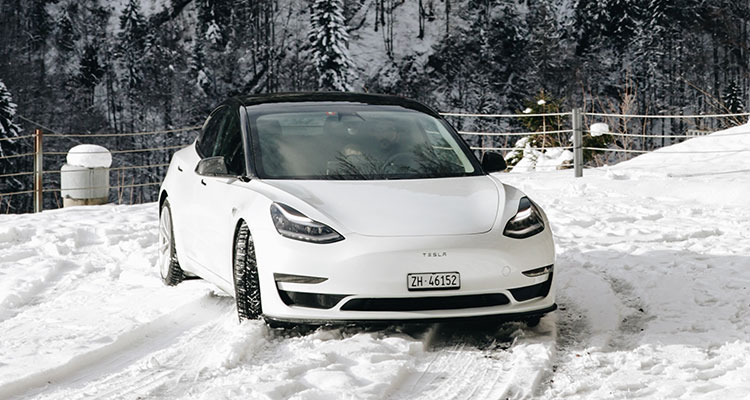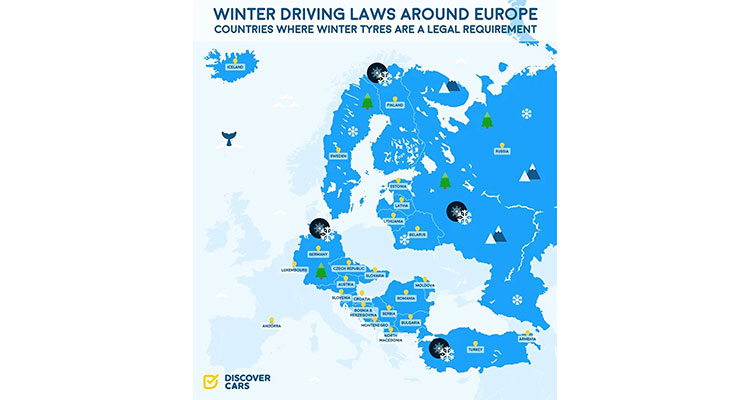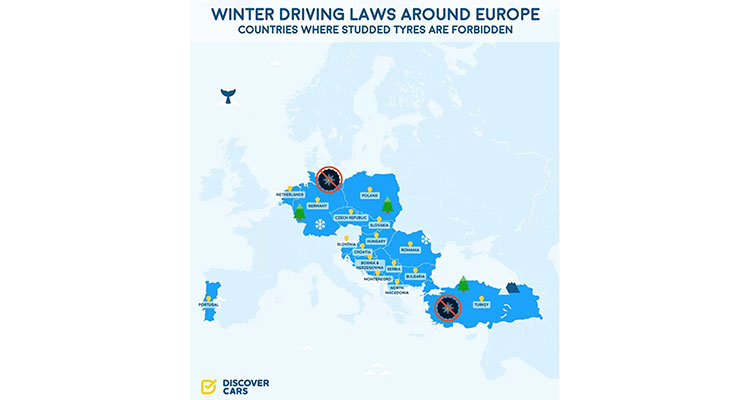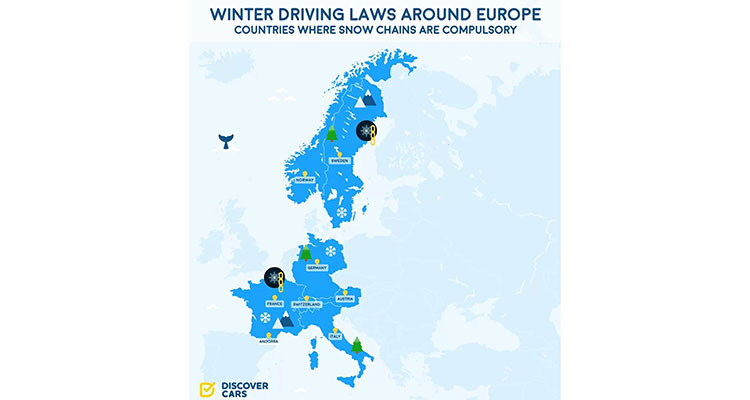Comparably, we’ve got things easy in the UK when it comes to winter driving laws!
Although the British winter can sometimes be treacherous, some other European countries experience even harsher climates during the cold season.
DiscoverCars have collected data from 47 European countries to explore differences in winter driving laws. In the UK, there aren’t really any winter-specific laws for driving as there are in many of our neighbouring countries so it may come as a surprise to some that these laws not only exist but are actively enforced.

Road safety is certainly important and countries such as Sweden, Finland and Iceland can experience heavy snow storms, thick layers of ice and even worse visibility than British motorists experience during the cold and dark months each year.
To combat the much more adverse weather, various countries in Europe require the use of winter tyres during a certain part of the year. For instance, in Finland it is compulsory for cars to have winter tyres fitted by the first of December and they must stay on until the last day of February. Furthermore, Finland law also rules that winter tyres cannot be used past the 20th of April, making it so that motorists are using sensible tyres all year round.

As you can see by the infographic from DiscoverCars, many other countries also make winter tyre use mandatory. These include Sweden, Germany, Russia, Iceland and many others. Surprisingly, Norway and Poland are absent from the list, as well as a few others that see particularly harsh winters.
Another interesting area of winter driving law is how studded tyres are permitted. Although they offer superior grip over non-studded winter tyres, this special tyre type has its disadvantages too, with them potentially being dangerous at high speeds as studs can fly off of the tyre. Also, they are damaging to road surfaces if there is not a thick layer of snow/ice and although they offer better grip, studded tyres have unique handling characteristics where one second you have all the grip in the world and in the next, all grip is lost if the studs have nothing solid to anchor in to.

For these reasons, studded tyres are strictly forbidden in many countries, most in central Europe where the winters can be harsh but not extreme enough to allow for studded tyres.
Lastly, there is another type of winter tyre modification that is regulated and that is snow chains. Like the final tool in a motorist’s arsenal for dealing with adverse snow and ice, snow/tyre chains are fitted over the tyre and are the best solution for deep, thick snow and ice. Only one country in Europe forbids the use of chains – the Netherlands.

Other countries have made it a legal requirement that chains are carried in the car and in some areas, road signs communicate that chains must be worn past a certain point. This can often apply to the mountainous areas of Italy and the Czech Republic.
Did any of these European driving laws surprise you? Let us know in the comments, below!
If you enjoyed this, you may also like: ‘5 Vital Car Checks To Make This Winter’
Info courtesy of DiscoverCars
For more articles like this, receive our weekly e-newsletter, including partner deals and all things motoring, register your email below.
Please note: You cannot subscribe to Smart-Motoring unless you put a tick in the checkbox below to indicate have read and agreed to our privacy policy.




Leave a Reply
You must be logged in to post a comment.